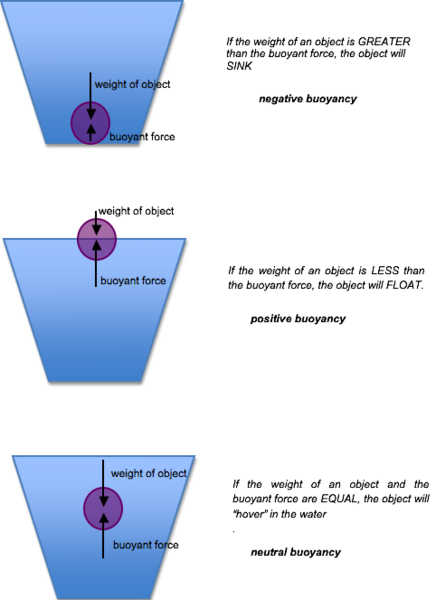Eureka!!! The Archimedes' principle explains how the ship floats

a cargo ship: wikimedia commons - under public domain license
Hello steemians, welcome to my blog. Have you ever wonder why the ship as heavy as it is floats on the ocean and doesn't sink unless of course there's a hole or it hits a rock in the ocean? Have you for once given it a thought?
You can't walk on water because you're heavy and you'll drown but this ships can float even though it is a billion times heavier than you are, and carries about 3000 sailors and 50 airplanes. Well it's simple. It does so by following the Archimedes principle.
Let me tell you how Archimedes came about this principle. There was a time in the old city of Syracuse, archimedes was charged with proving that the new crown made for the king was not of pure gold as the goldsmith had claimed. Archimedes thought hard and long but could not find a way of proving that the crown was not made of pure gold. Soon after he filled a bathtub with water and noticed that as he got into the bathtub, water spilled over the edge of the bathtub. He noticed that the weight of water displaced by his body was equal to the weight of his body. Knowing fully well that gold was heavier than the metal the goldsmith could have used, Archimedes had his method to determine that the gold was not indeed pure gold. Forgetting that he was unclothed, he went running down the street to the king shouting “Eureka”.
Archimedes was able to determine that the crown was not pure of gold due to the volume of the water displaced, because even though the weight of the crown was identical to the weight of the gold that the king gave the goldsmith, the volume was different due to the differences in the densities of the metals.
Source
But before we talk about the archimedes principle, we need to take a look at the buoyant force.
The buoyant force is an upward force exerted by a liquid that opposes the weight of an immersed object, that is, If you put an object inside a container of water, this object is under influence of a buoyant force which is proportional to the weight of the water which is displaced by this object.
What does the archimedes principle state
The archimedes principle states that the buoyant force exerted on an object immersed in a fluid is equal to the weight of the fluid displaced by the object.
That is whenever you immerse an objects in a container filled with liquid, its level increases. For instance, when you take a glass of water and drop ice cubes inside, you observe that the level of the water goes up.
The more the object is immersed, the more the level of the liquid rises. We should understand that the increase in the level of the liquid is due to the fact that as we begin to immerse the object in the liquid, it occupies a space within the liquid, which is equal to the volume of the object when it is immersed completely.
Experience also tells us that when an object is immersed in liquid, it appears lighter in weight. The liquid pushes it upward, partially supporting it somehow. That would be obvious to anyone when you rise from bathing in a bathtub, your arm may feel strangely heavy. This effect is due to the loss of the buoyant force of the water.
We should also know that whenever an object is partially or completely immersed in a liquid, it experience an apparent decrease in weight. This decrease in the weight of the object depends on the density of the liquid. Thus, if you immerse a stone partially or completely in water, it will experience a greater weight loss than if it was submerged in gasoline, which is less dense.
You can try this at home, put an egg into a container of freshwater, you'll observe that the egg goes to the bottom of the container. Now, keep adding salt to the freshwater, it will get to a point, you'll observe that the egg begin to float. What happens is that by adding salt, we're increasing the mass of the water while the volume remain constant.
_LOC_matpc.23180.jpg)
A man floating on the dead sea: wikimedia commons - under public domain license
For this reason, it will be very difficult for someone to drown in the dead sea as it is hypersaline.
It has been verified that all the above observations also applies to objects immersed in gases since both liquids and gases are considered fluids.
It think, it will interest you to know that when an object is immersed in a fluid, three cases can be observed:

balls describing buoyancy: wikimedia commons - under CC4.0 license
Positive buoyancy: this happens if the object is less dense than the fluid. In this case the object will float.
Negative buoyancy: this happens if the object is more dense than the fluid. In this case the object will sink.
Neutral buoyancy: this happens if the object has equal density to that of the fluid. Here the object neither float nor sink.
Now let's talk about how the ship floats
If we take a block of iron or steel and put it in a container of water, it immediately sinks to the bottom. However, if we take that same size of iron or steel and make a tray, wide enough that when we place it in the container of water, it would surely float.
The weight of the amount of water displaced by the block of iron is less than the weight of the iron, so it sinks. The tray, although has the same weight floats because the weight of the amount of water displaced increases, which of course causes a positive buoyancy. This is what is done to the ships to enable them float.
They are constructed in such a way that the hull displaces large amount of water so that the thrust is greater than the total weight of the ship.
In fact all ships, whether small or large, and of any material, are constructed in such a way that the weight of the water they displace is greater than their weight and the possible load that would be added when sailing.
The Archimedes principle is also applied in submarines to enable it submerge and float in the oceans. A submarine has two helmets, one placed inside the other. The exterior helmet is called the hydrodynamic hull or light hull, which gives the submarine the necessary hydrodynamic shape so that it can move with speed both on the surface of the water and in the water. The interior helmet, called resistant hull or pressure hull, is built to withstand water pressure when the submarine is submerged. When the captain of the submarine decides to submerge, all the openings of the pressure hull are closed, turning it into an airtight container capable of maintaining the pressure and oxygen necessary for its crew to survive under water.
Other applications of the Archimedes principle include:
Measurement
The Archimedes principle is useful in measuring the volume of irregular objects such as the gold crown as well as understanding the behaviors of any object placed in any fluid.
Medicine
The Archimedes principle is used in the medical and dentistry field to determine the densities of bones and teeth. In 1997, researchers used the archimedes principle to measure the volume of a part of the bone known as the cancellous bone. The volume of the cancellous bone can be used in various health studies including being an index in aging studies, bone strength, osteoporosis, stiffness, and elasticity studies.
Robotics
The Archimedes principle also explains why some bug can walk on water. In a study in 2016, researchers used a method of measuring shadows created by the water striders in order to measure the curvatures on the water surface. These dips is then used to determine the water volume that was displaced leading to the force used to keep the water-bugs afloat. The researchers said, there is a need to understand the physics behind the water-walking bugs in order to create biomimetic water-walking robots.
Conclusion
Practically, the Archimedes principle allows the buoyancy of an object partially or completely immersed in a fluid to be calculated, as it used in the design of ships and submarines.
The downward force applied on the object is its weight and the upward or buoyant force is that stated by Archimedes principle, above.
Thus, the total upward force applied on the object is the difference between the buoyant force and its weight. If this total force is positive,the object will rise; if negative, the object sinks; and if the total force is zero, then, the object is neutrally buoyant that is, it neither rises nor sinks.
Ships are a good example of how science can be put to work to solve human problems.
References
Mb student
lumen learning
live science
britannica
britannica
If you write STEM (Science, Technology, Engineering, and Mathematics) related posts, consider joining #steemSTEM on steemit chat or discord here. If you are from Nigeria, you may want to include the #stemng tag in your post. You can visit this blog by @stemng for more details. 
I'm a proud member of @promo-mentors where you get mentored and guided on how to make quality posts on steemit amongst other benefits. Do join us on discord. We anticipate your arrival.

Upvote this: https://steemit.com/free/@bible.com/4qcr2i
Interesting article, but I think you got mixed up in the beginning by saying:
He noticed that the water displaced by his body was equal to the weight of his body.
What I think you meant is that the volume of water displaced by an immersed body is equal to the volume of the latter. Therefore, Gold being twice as dense as silver, he could easily verify if the crown was indeed pure gold - by determining the volume of the crown and knowing its weight.
Thanks for the correction.
The article is interesting... But u need to be more careful about referencing u images.. Please recheck ur images and provide appropriate license links of those images...
To learn more about image issues, u can check out this article.
Hello @christina, the images have been properly referenced.
Congratulations @doctorchungs! You received a personal award!
You can view your badges on your Steem Board and compare to others on the Steem Ranking
Do not miss the last post from @steemitboard:
Vote for @Steemitboard as a witness to get one more award and increased upvotes!